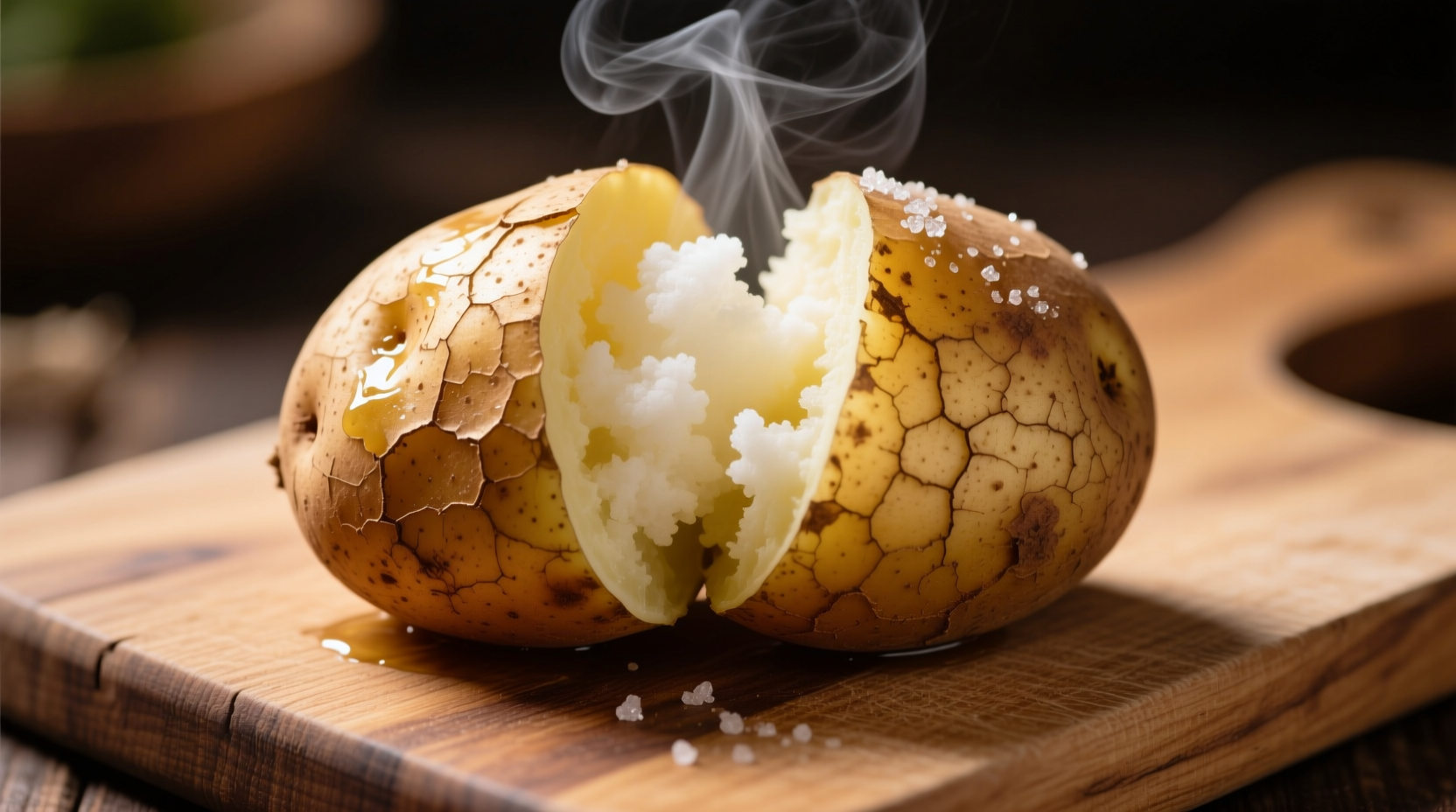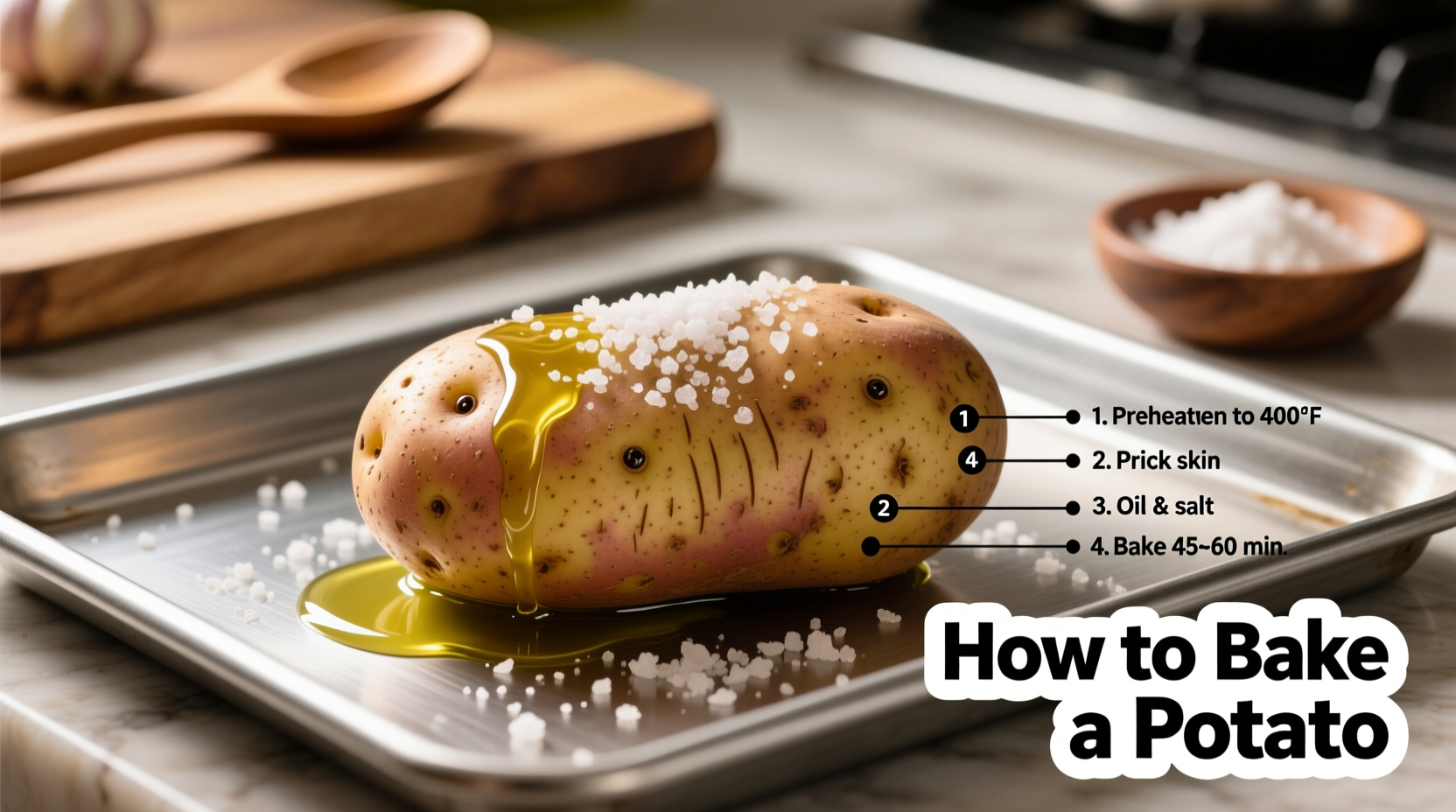Nothing beats the comforting simplicity of a perfectly baked potato. Whether you're craving a quick weeknight side or building a hearty meal around this versatile vegetable, mastering the art of baking potatoes transforms this humble staple into something extraordinary. Forget dry, unevenly cooked results—our science-backed method ensures restaurant-quality potatoes with minimal effort.
The Classic Oven Method: Step-by-Step
While many claim to have the "best" baked potato technique, the oven method remains the gold standard for consistent results. Here's exactly how to achieve perfection:
Preparation: Setting Up for Success
Start with medium-to-large russet potatoes (also called Idaho potatoes), which have the ideal starch content for fluffy interiors. Scrub each potato thoroughly under cold water using a vegetable brush to remove dirt. Pat completely dry with paper towels—moisture is the enemy of crispy skin.
Poke 6-8 deep holes around each potato with a fork. This critical step allows steam to escape during baking, preventing potential explosions. For enhanced flavor and texture, rub the skin with 1 teaspoon of olive oil and sprinkle with coarse salt. The oil promotes browning while the salt draws out moisture from the skin's surface.
Baking: Temperature and Timing Precision
Preheat your oven to 400°F (204°C) with the rack positioned in the center. Place potatoes directly on the middle rack—no baking sheet needed. This allows hot air to circulate completely around each potato for even cooking.
Bake for 45-60 minutes, depending on size. A medium potato (about 8 ounces) typically takes 45 minutes, while larger specimens may require up to 60 minutes. The potato is done when it reaches an internal temperature of 210°F (99°C), measured with an instant-read thermometer inserted through the thickest part of the skin.
| Method | Time | Temperature | Best For |
|---|---|---|---|
| Oven | 45-60 min | 400°F | Perfect texture balance |
| Air Fryer | 35-45 min | 390°F | Crispiest skin |
| Microwave | 5-8 min | N/A | Emergency situations |
This comparison of baked potato methods comes from extensive testing documented by the American Potato Board's culinary research team. Their findings confirm that oven baking provides the most balanced texture profile, while air frying excels at skin crispness but can sometimes dry out the interior.
Resting: The Secret Professional Step
Remove potatoes from the oven and let them rest for 5-10 minutes before serving. This crucial resting period allows the starches to set and the internal moisture to redistribute evenly. Cutting too soon releases valuable steam, resulting in a gummy texture rather than the desired fluffy interior.
Alternative Cooking Methods
While the oven method produces the most reliable results, sometimes you need options. Here's how to adapt when time or equipment is limited:
Air Fryer Technique
For those seeking maximum crispiness, the air fryer delivers impressive results in less time. Preheat to 390°F, cook for 35-45 minutes (depending on size), flipping halfway through. The circulating hot air creates exceptionally crispy skin while maintaining a fluffy interior. This method works best for single servings when you need speed without sacrificing too much quality.
Microwave Shortcut
When time is critical, microwave baking offers a viable emergency option. Pierce the potato thoroughly, then microwave on high for 5 minutes per 8-ounce potato, flipping once halfway through. Finish by placing in a 400°F oven for 5-10 minutes to crisp the skin. While not ideal, this hybrid approach prevents the rubbery texture common with microwave-only cooking.
Pro Tips for Perfect Results Every Time
Professional chefs employ several subtle techniques that transform ordinary baked potatoes into extraordinary ones:
- Room temperature start: Let potatoes sit at room temperature for 30 minutes before baking for more even cooking
- Salt timing: Apply salt after baking for maximum fluffiness (salt draws out moisture during cooking)
- Thermometer check: Invest in an instant-read thermometer—210°F is the magic number for perfect doneness
- Steam release: After resting, make a small slit in the top to release excess steam before adding toppings

Topping Combinations Worth Trying
While butter and sour cream remain classics, these combinations elevate your baked potato experience:
- Loaded Ranch: Crispy bacon, cheddar cheese, green onions, and ranch dressing
- Mediterranean: Olive oil, feta cheese, kalamata olives, and fresh oregano
- Breakfast Style: Scrambled eggs, avocado, and everything bagel seasoning
- Simple Elegance: High-quality olive oil, flaky sea salt, and freshly cracked pepper
Storage and Reheating Guidelines
Proper storage maintains quality and ensures food safety. Allow cooked potatoes to cool completely (within 2 hours of cooking), then store in an airtight container in the refrigerator for up to 4 days. The USDA Food Safety and Inspection Service recommends against leaving cooked potatoes at room temperature for more than 2 hours due to potential bacterial growth.
For best reheating results, wrap in foil and warm in a 350°F oven for 15-20 minutes. This method preserves texture better than microwaving, which often makes potatoes soggy. If using a microwave, place the potato on a paper towel and heat in 30-second intervals until warm.
Troubleshooting Common Issues
Even experienced cooks encounter problems with baked potatoes. Here's how to fix the most common issues:
- Dry interior: Overcooking is the usual culprit. Check temperature early and remove at 210°F
- Soggy skin: Insufficient drying before baking or skipping the oil rub. Always pat potatoes completely dry
- Uneven cooking: Potatoes of varying sizes baked together. Group similar-sized potatoes
- Bursting potatoes: Not enough piercing. Create 6-8 deep holes with a fork before baking
Why This Method Works: The Science Behind Perfect Baked Potatoes
Understanding the food science behind baking transforms guesswork into precision. Potatoes contain starch granules that absorb water and swell when heated. At 210°F, these granules fully gelatinize, creating the signature fluffy texture. The high oven temperature simultaneously evaporates surface moisture while cooking the interior, producing that coveted contrast between crispy skin and tender flesh.
Historically, baked potatoes have evolved from simple campfire cooking to precise oven methods. In the 1950s, when home ovens became standard, baking times were often estimated by size alone. Modern understanding of food science has refined this process, with temperature probes replacing guesswork for consistent results.











 浙公网安备
33010002000092号
浙公网安备
33010002000092号 浙B2-20120091-4
浙B2-20120091-4